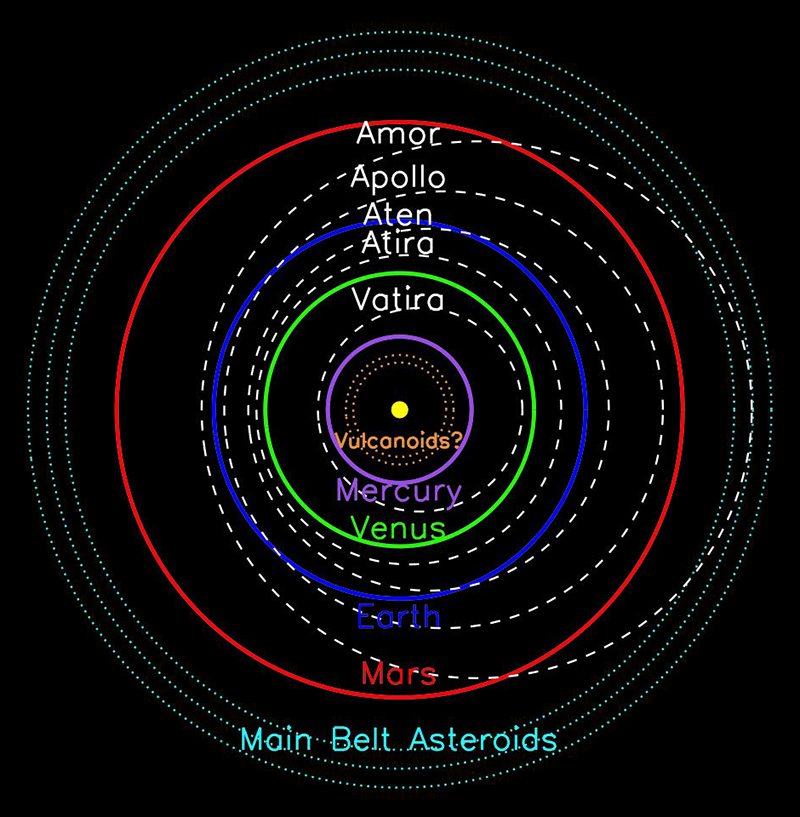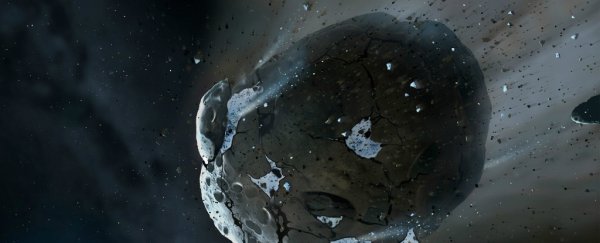The Sun's glare is the main reason telescopes tend to look outwards from Earth, away from the center of our Solar System. New research reveals that for telescopic surveys prepared to peer in the other direction, there's lots to be found.
In particular, recent surveys are revealing near-Earth objects or NEOs, including asteroids we've never seen before. When it comes to understanding Solar System history and planet formation, finding and tracking these asteroids could be crucial.
Astronomer Scott Sheppard, from the Carnegie Institution for Science in Washington DC, has reported on some of the NEOs that are being found between Earth and the Sun – and the discoveries are only just beginning.
"New telescopic surveys are braving the Sun's glare and searching for asteroids toward the Sun during twilight," writes Sheppard in a column in the latest Science journal.
"These surveys have found many previously undiscovered asteroids interior to Earth."
The discoveries include the first asteroid with an orbit interior to Venus (named 'Ayló'chaxnim 2020 AV2), and the asteroid that currently has the shortest-known orbital period around the Sun (named 2021 PH27).
While modeling has predicted that these asteroids should exist, now telescopes such as the Zwicky Transient Facility camera in California and the National Science Foundation's Blanco 4-meter telescope in Chile – with the Dark Energy Camera (DECam) attached – are beginning to actually find them.
These asteroids get categorized based on their position: we have the Atiras (with orbits interior to Earth), Vatiras (with orbits interior to Venus), and the hypothetical Vulcanoids (with orbits interior of Mercury).
What we know from observations of craters on planets and moons is that the numbers of NEOs have been steady over the last few billion years.
Considering their dynamically unstable orbits (of around 10 billion years) and unpredictable movements (caused by exposure to the Sun), that suggests that NEOs are being replenished in some way.
 Asteroids can be categorized based on their distance fron the Sun. (V. Cary, AAAS/Science)
Asteroids can be categorized based on their distance fron the Sun. (V. Cary, AAAS/Science)
"The movement depends on the asteroid's rotation, size, albedo, and distance from the Sun," writes Sheppard. "The smaller an asteroid is and the more sunlight it absorbs, the larger its movement."
These asteroid discoveries should help us to understand more about their movement, and how the number of NEOs has managed to stay steady over such long periods of time. Scientists think that most NEOs are asteroids that have been dislodged from the main belt between Mars and Jupiter.
However, Sheppard points out there might also be stable inner reservoirs of NEOs, providing a steady supply of Atiras and Vatiras. These may feed in and replace asteroids that spin out into the wider Solar System, crash into a planet, or get obliterated by close contact with the Sun.
The smaller the asteroids, the harder they are to spot of course. Scientists estimate that around 90 percent of the so-called 'planet killer' NEOs – those 1 kilometer (0.62 miles) or more across – have already been found.
"The last few unknown 1-km NEOs likely have orbits close to the Sun or high inclinations, which keep them away from the fields of the main NEO surveys," writes Sheppard.
The perspective was published in Science.
